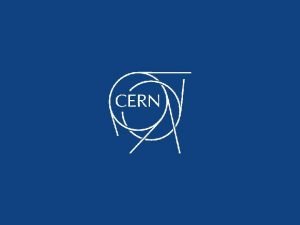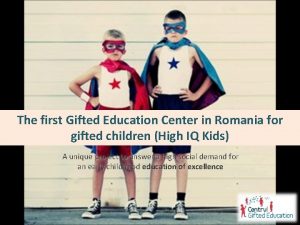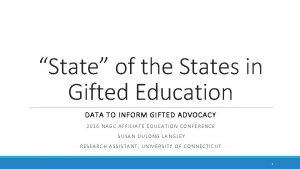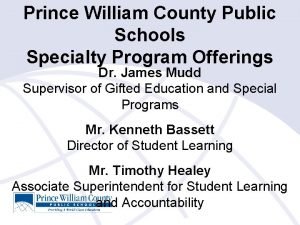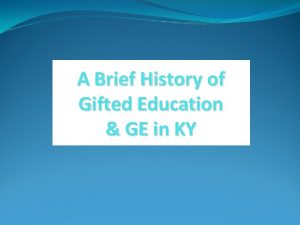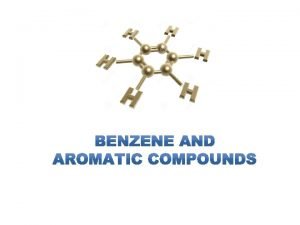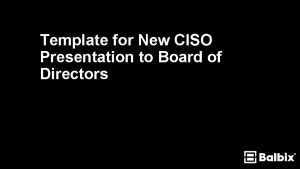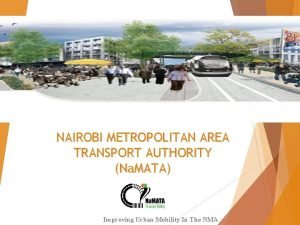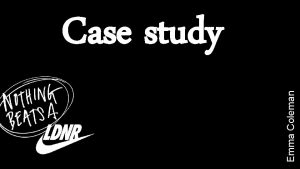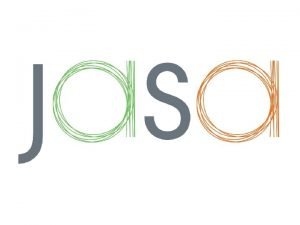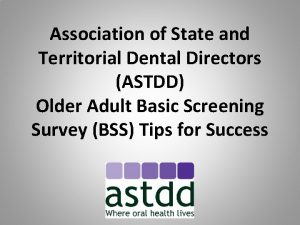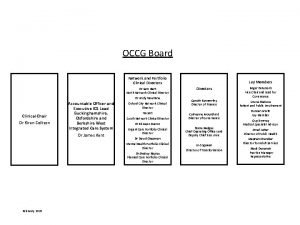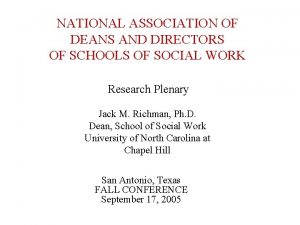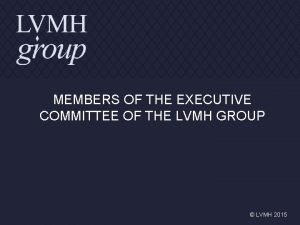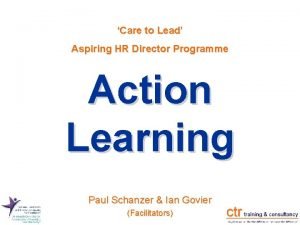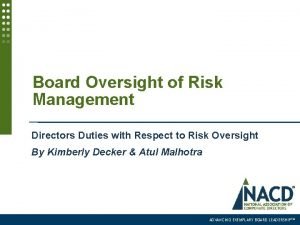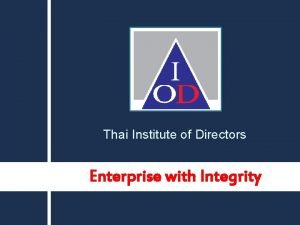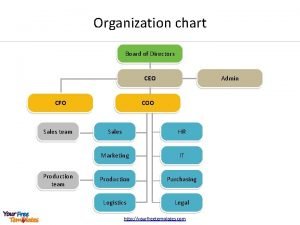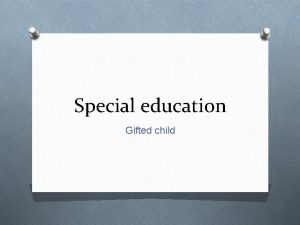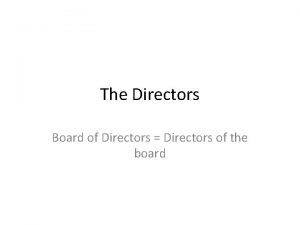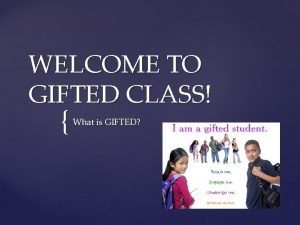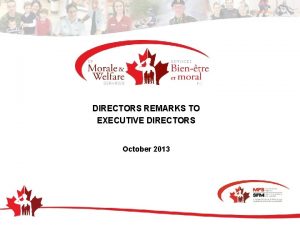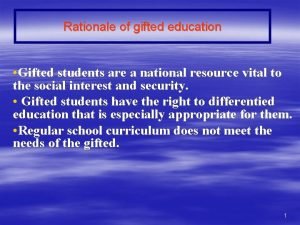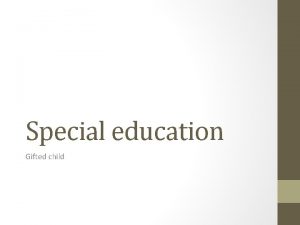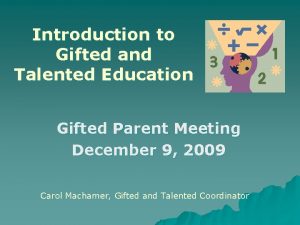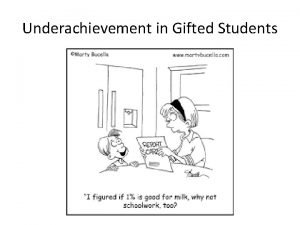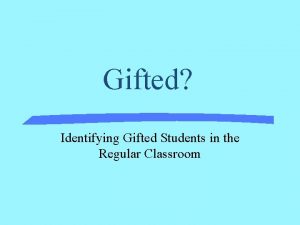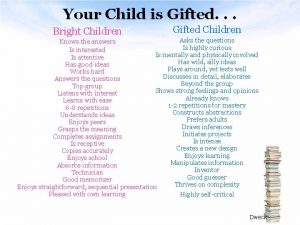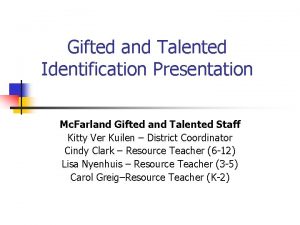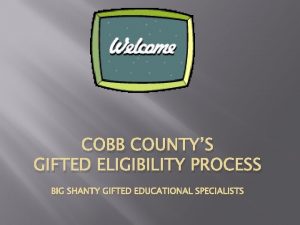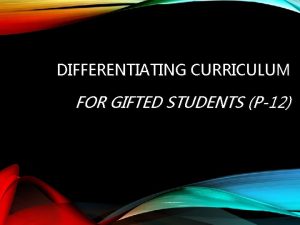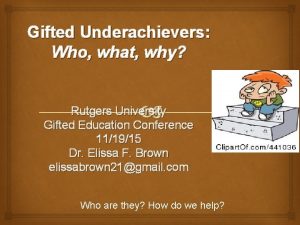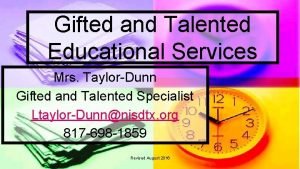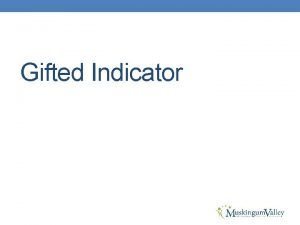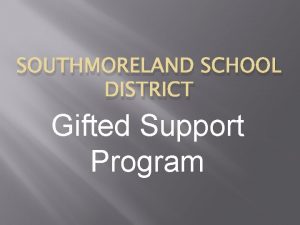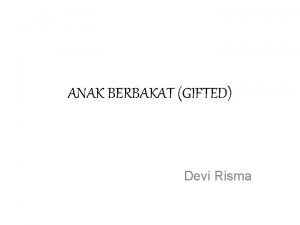WELCOME GIFTED EDUCATION DIRECTORS Office of Gifted Education

























- Slides: 25

WELCOME GIFTED EDUCATION DIRECTORS Office of Gifted Education September 18, 2013

CAGT State Awards Carol Crossley Lifetime Achievement Adam Hartman Administrator of the Year Cyndi Swart Special Advocate

Paving the Way For Implementation Celebrating Successes of 2012 -13 i ar p e r …. P 3 r o f ng 2 4 1 3 01

Celebrating Successes Along the Way REA D Ram Act p Up e acco -Grants unti ng, b , udge t Ed. E 4 ff. P ilot Rura l BOC Council ES fu & ndin g Data Pipe line Dist rict Curr Sample iculu m Grad u Guid ation eline s Com mun Reso ication urce s Re Spec inventin ial E g duca tion

Preparing for 2013 -14 Ø Gifted Education Program Addendum Ø School finance – ballot initiative Ø Data pipeline - live Ø Educator evaluation – statewide rollout Ø Standards – statewide rollout (curriculum unit samples) Ø New assessments – social studies & science Ø READ Act and School Readiness Plan Ø Year 4 on accountability clock 5

Gifted: Together we can Vision § All gifted students will accomplish challenging post secondary workforce goals and become productive, creative citizens capable of succeeding in their area of strength. Mission § Ensure gifted student growth and achievement through systems of support, programming and advocacy.

Delivery Plans: High Impact Focus Areas that Cut Across Our Goals Best education system in the nation Outstanding schools and districts Great teachers and leaders Successful students Literacy Program Addendum and Turnaround, Improvement Districts Achievement Excellence Gap 7

Acceleration Statement § Criteria • Concise • One page or less § Big Ideas • Importance of acceleration for students with exceptional potential • Checking for mastery, application and transfer • Use of Iowa Acceleration Scale for grade level acceleration

LITERACY Legislation impacting gifted students SCHOOL READINESS Gifted Student Performance READ ACT

ER N V O E S N U L C L I O F S W U U U C O O IF Y LTS, Y OU FO ILL Y U W to e. F S I E U. R E is c O G Y , N e an E A g G H N n d C A a H. h the C S T c N L f in O SU o E R t jo T u E G o d e n s , n t se h i e it ak w m ve o t mo y a , w o it ly nt n o ei e g Th lun p Addendum a GGAP Action Literacy Online PD and tutorials

Online Professional Learning GET: Gifted Education Tuesdays § Familiar • Online courses as per schedule § New proposal • Routine 7 months of year • Blend of CDE and WOW Sessions • Partnership with Colorado Association for Gifted Children • Melanie Isenhour , Coordinator

Team Projects – tutorials, etc. ID Gifted 4 ARTS Administrators Top Five 2013 - 2014 TIME LINE AND PRIORITY

Colorado gifted Education review UPDATES Desk Audit AU Checklist and Process Calenda r ALP Checklist AU Evidence Improvements from last C-GER CGER Handbo ok and Templat e Random onsite interview s or groups Verify desk audit

Engagement and Integration § NEED GIFTED EDUCATION REPRESENTATION § High School Guidelines § Literacy Council § Research § Leadership Forum – October 8 Announcements: CAGT, CASE, Higher Education § Curriculum Projects (Standards; Blended) § Family, School Partnership § Gifted 4 -ARTs Gifted Edu cation Contributors Engaged and shared inquiry Blending of gifted student needs and strength-based interests

Under-represented Groups § Youths § People with disabilities § Low-income and working poor § Impoverished and/or homeless § Immigrants § People for whom English is second language § Seniors § Single parents § Veterans § Racial or ethnic minority groups § Religious minority groups § Members of the gay/lesbian/bisexual/tra nsgender community § People with limited education or literacy

Under-representation § Identification itself will not solve the problem of the underrepresentation of minority and low-socio economic students § IF lack of opportunity to learn in and outside school is prevalent § Need § Early stimulating, developmentally instigated environments § Development-producing experiences that may be a long-term trajectory for the child Gee, 2003; Robinson, 2006

Pre-referral experiences: exposure, engagement, skills Beyond School Recognizing and Deve loping Talents Before a student is referred for gifted identification 17 • Community or online programs; camps • Concept attainment and skill development • Observations • Summative assessment/product(s) School Extensions • Programs run by school personnel • After-school, Saturday, or summer; 1 -2 week units • Concept attainment and skill development • Observations • Summative assessment/product(s) General Classroom • Classroom activities that integrate talent opportunities • Concept attainment and skill development • Ongoing observation • Use of classroom "jot down" tool Specialist Classroom • Differentiated, standards-based curriculum and instruction • Concept attainment and skill development • Observations • Summative assessment

Pre-referral experiences: exposure, engagement, skills Observable Characteristics Recognized Recognizing and Deve loping Talent 1. ALL experiences: Activities designed to elicit gifted behaviors Before a student is referred for gifted identification 2. Observation tools & ratings used to document gifted behaviors AND/OR 2. Rubrics applied to assessments 18

Initial decision point about identification Recognizing and Deve loping Talent Observation ratings and/ or assessment yield indicators (one or more strong data points) to prompt referral formal identification process Deciding when to refer a student for gifted identification OR Problem-solving team including someone knowledgeable about gifted students makes decisions about future instruction and providing more intense experiences and talent development 19

Continuous talent development Recognizing and Deve loping Talent Referral formal identification process Referral from classroom or specialist teacher; from parent or student; from community member, private teacher, or peer Indicators from pre-referral experiences (observations, assessments) may be used as part of the Body of Evidence required for identification Whether a student is ready for gifted identification or not, continue to develop talent OR Ongoing development of concepts and skills: Intentional Differentiated in intensity based on student interest and readiness In every setting Refer when indicators are present 20

Formal identification process Recognizing and Deve loping Talent Data sufficient to make a determination of giftedness in any domain: 3 or more pieces of qualifying evidence from 2 or more of the following categories: Intellectual Ability The formal identification process Behaviors/ Characteristics Body of Evidence Achievement Demonstrated Performance 21

Achieving Equity & Excellence for Culturally Diverse Gifted Learners Dr. Joy Davis

Recognition § Colleen Anthony and Diana Caldeira § ALPs: Making Them Meaningful to Secondary Students § Bonnie Norton and Shaynee Jesik § Superintendent’s Cross Curriculum Writing Awards § Laura Suzuki and Susan Anderson § Adjusting Standards-based Report Cards for Acceleration in Mathematics § Debbie Rothenberg and Metro Region § Metro Region Resource Bank

You are the Change http: //youtu. be/jwxrsng. EJDw

Afternoon Schedule § Breakout sessions § Lighthouse projects – agenda § Social Emotional – Dr. Joy Davis § Network Sessions § Action § Evaluation § Certificates
 Welcome 2 directors
Welcome 2 directors Gifted education
Gifted education State of the states in gifted education
State of the states in gifted education Pwcs specialty programs
Pwcs specialty programs Gifted and talented learners in the philippines
Gifted and talented learners in the philippines History of gifted education
History of gifted education Wise men three clever are we
Wise men three clever are we Discovery of benzene
Discovery of benzene Ciso board report template
Ciso board report template Namata board of directors
Namata board of directors Role brief
Role brief Joint medical holdings
Joint medical holdings Directors emma wolverson
Directors emma wolverson Compliance presentation to board
Compliance presentation to board Kpmg directors toolkit
Kpmg directors toolkit Association of state and territorial dental directors
Association of state and territorial dental directors German expressionist directors
German expressionist directors Clinical directors network
Clinical directors network National association of deans and directors
National association of deans and directors Lvmh executive team
Lvmh executive team Aspiring directors programme
Aspiring directors programme Board of directors risk oversight responsibilities
Board of directors risk oversight responsibilities Thai institute of directors association
Thai institute of directors association Nancy maher
Nancy maher Perfectionist directors
Perfectionist directors Ceo cfo organizational chart
Ceo cfo organizational chart
